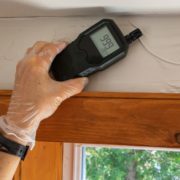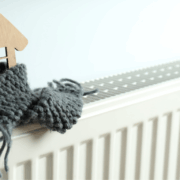Awaab’s Law changes how the sector responds to damp and mould. This new legislation demands fast responses, clear records and proportionate actions to provide better protections for tenants.
There are clear deadlines. When a potential emergency hazard is reported, you must:
- Investigate within 24 hours
- Make safe within 24 hours
- Publish findings within 3 days
- Initiate procurement within 5 working days
- Commence any necessary remediation works within 12 weeks
Response times are crucial. It’s important to familiarise yourself with the major causes of dampness in buildings so you can accurately diagnose defects.
Dampness comes in three distinct forms: condensation, penetrating damp and rising damp. Misdiagnosis can lead to incorrect and unnecessary repairs, which can result in unresolved issues, repeat visits, and ultimately affect the health and well-being of tenants.
Condensation typically ‘appears’ from October to April. Water droplets on windows, walls and ceiling lead to mould growth where air movement is poor and relative humidity (RH) is high. Hygrometers and data loggers can give objective evidence and help you determine relative humidity. Teach your tenants to keep their home warm and well-ventilated, with evidence to defend your conclusions. Government guidance states that you should be able to share information on damp and mould health risks and advise on changes tenants can make to reduce the risk.
Under Awaab’s Law, hazards are categorised as either ‘significant’ or ‘emergency’.
If you identify an emergency hazard, you must make the home safe and habitable within 24 hours by reducing harmful exposure to safe levels while planning longer-term works to solve the underlying cause.
Where mould growth is present, carry out targeted cleaning with effective anti-mould treatments, along with dehumidification if necessary.
Repairs to address the causes of dampness must begin within 12 weeks of the first report. This may include ventilation upgrades, insulation where appropriate, penetrating damp or rising damp treatments.
Dealing with penetrating damp may require repairs to the fabric of the structure. Typical red flags include damp patches, blistering paint and circular spotting. Fix gutters and pointing, seal penetrations, and consider a breathable masonry water repellent with compatible patch mortars. These measures reduce water ingress through the envelope while maintaining vapour permeability and original appearance. Reducing moisture loads in external walls will also improve their thermal performance.
Dealing with rising damp requires a distinctly different approach. While rising damp caused by a lack of, or broken, damp-proof course (DPC) is rare, it is more often caused by a ‘bridged’ DPC. High external ground levels or rubble in wall cavities are typical.
Internally, look for tide marks, salt bands and damp stains on the lower half of the wall. Using a moisture meter to take readings across the length and breadth of the wall in a regular grid pattern will create a ‘moisture profile’. Rising damp is usually characterised by high readings at the base of the wall with a clear ‘cut off ‘ point in line with the visible salt band.
Where rising damp is confirmed, solve the cause of bridging and install a remedial damp-proof course if appropriate. Use a damp-resistant replastering system to protect finishes from hygroscopic salts.
The existing Decent Homes Standard and House Health and Safety Rating System (HHSRS) already set the standard for hazard reduction in living areas.
Awaab’s Law adds strict time limits and clearer expectations for triage, investigation and make-safe steps. Forward-thinking landlords are using this new legislation to modernise processes, upskill teams and standardise surveying, logging and sign-off so that every case is timely, proportionate and auditable.
My advice is simple: diagnose with care and attention. Act fast to make safe. Choose a remediation step that solves the underlying cause. Monitor regularly to verify performance. Document each step. That is how we protect people, comply with the law and extend the life of our properties.
Founded in 1983, Safeguard Europe manufactures and supplies building protection products to the UK, Europe and the world. Product quality, consumer education and customer support form the pillars of our company mission. Safeguard is a family-owned business based in Horsham, West Sussex.
























Comments